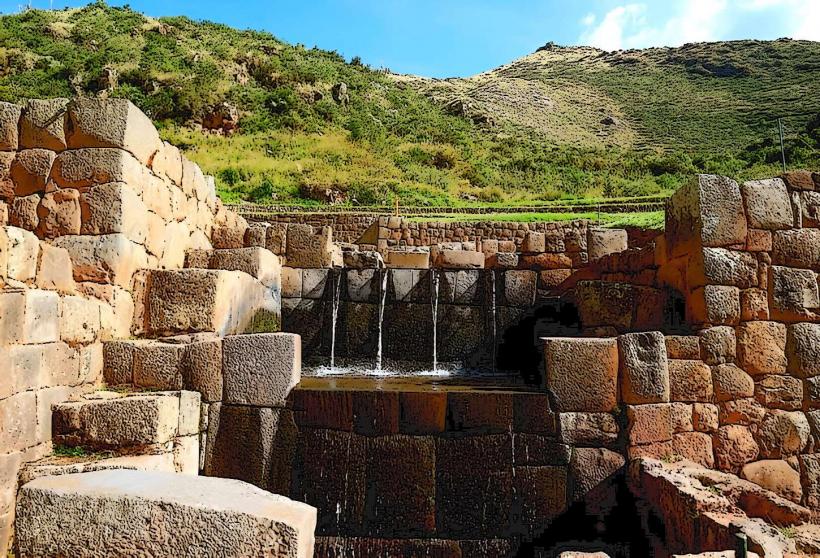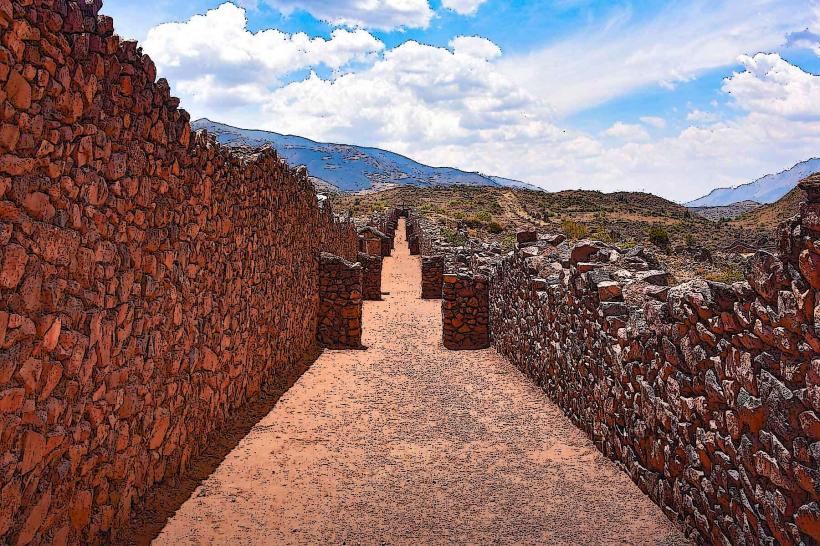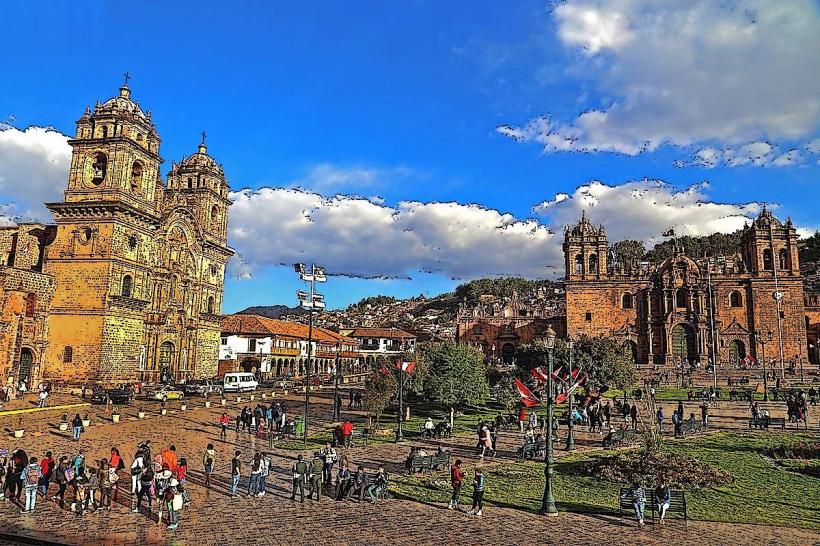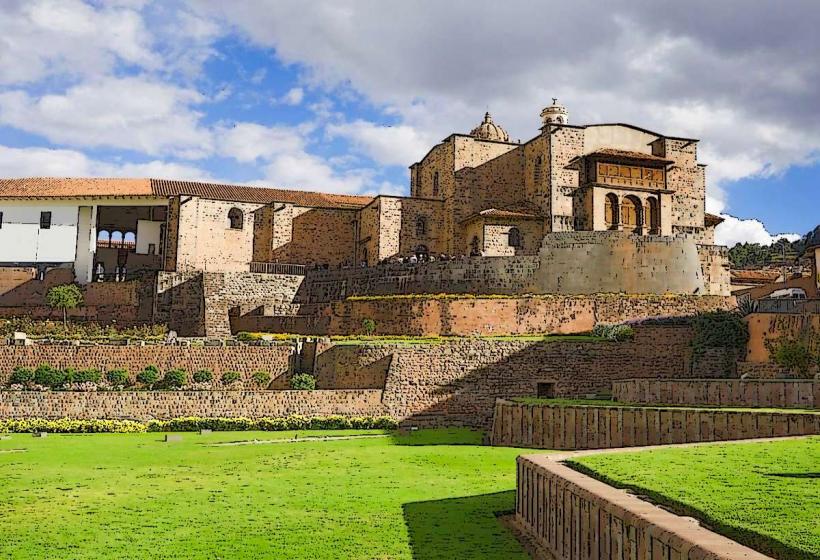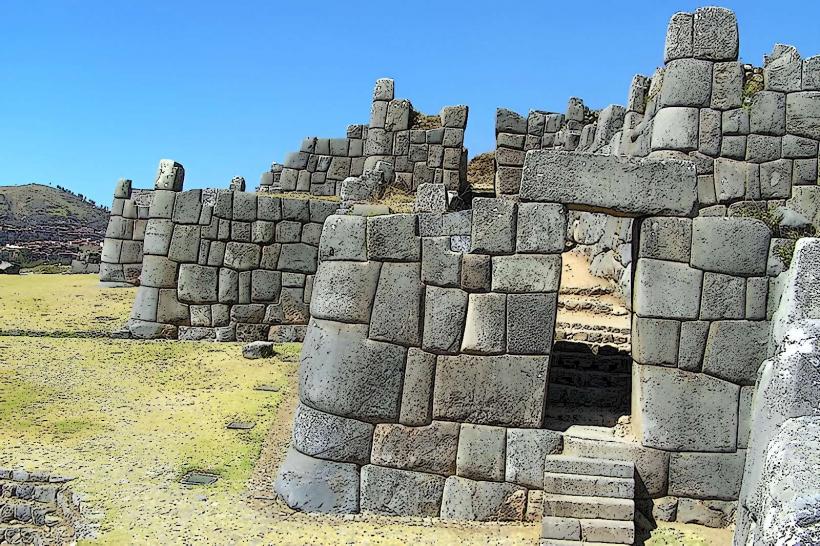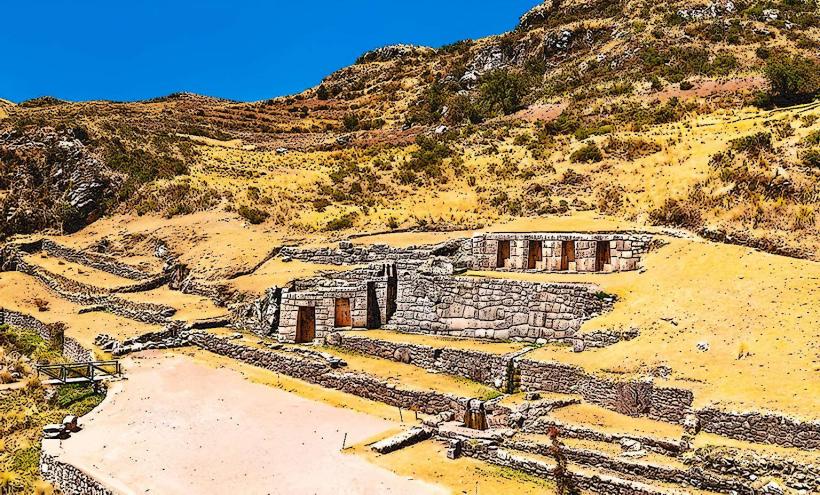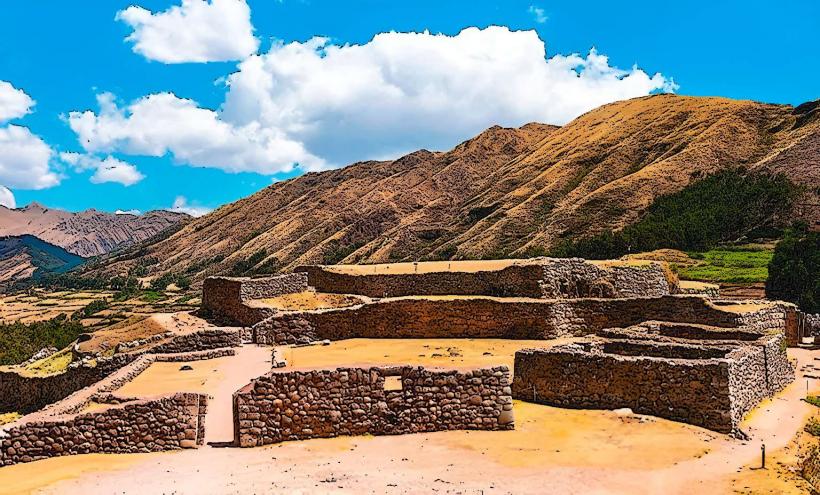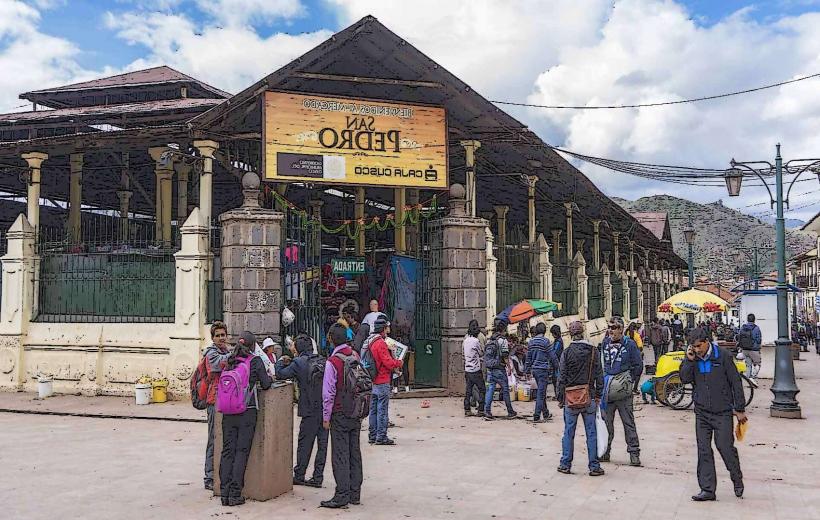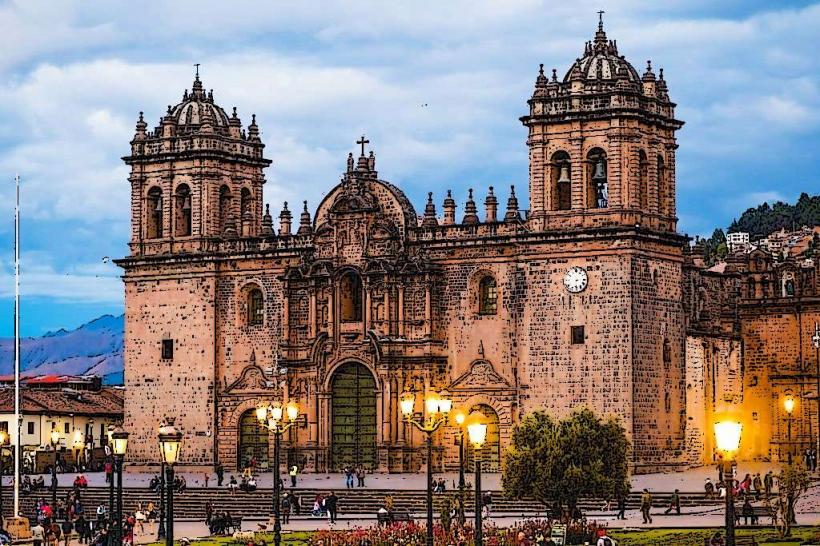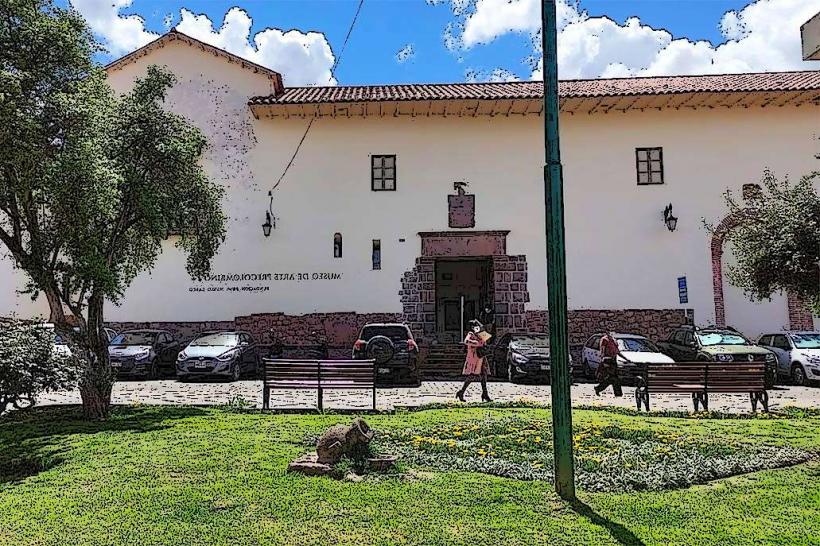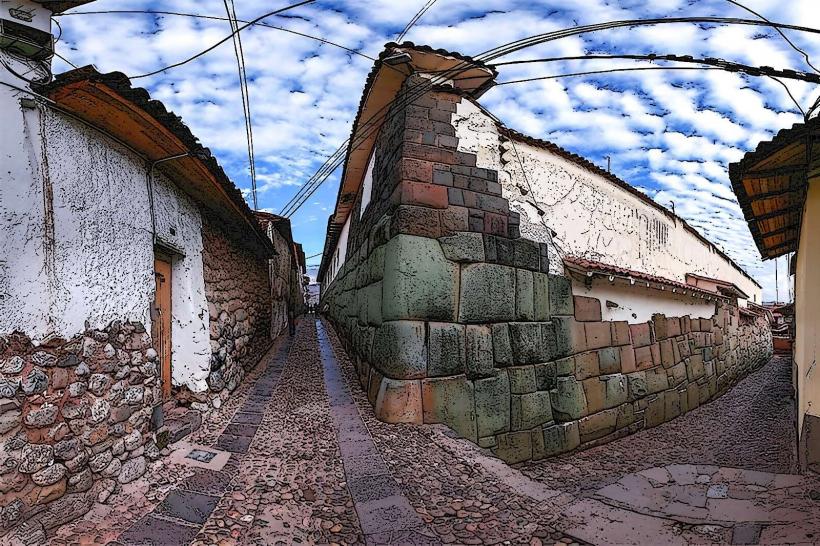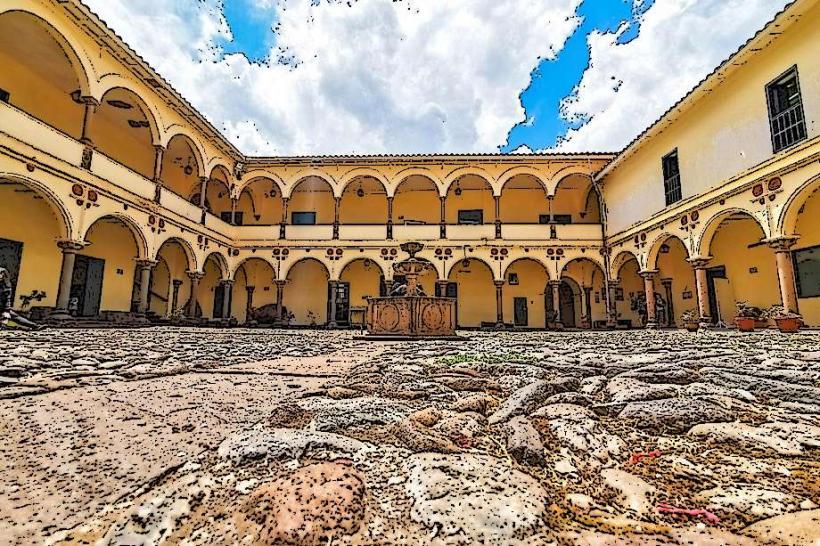Information
Landmark: CalcaCity: Cusco
Country: Peru
Continent: South America
Calca is a town and district located in the Sacred Valley of the Incas in Cusco Region, Peru. It is situated at an altitude of approximately 2,920 meters (9,580 feet) above sea level, making it one of the key towns in the Sacred Valley, which is known for its rich history, stunning landscapes, and proximity to important archaeological sites. Calca serves as both a gateway to the Sacred Valley and a vibrant hub for local culture and agriculture.
1. Overview of Calca
- Location: Calca is located about 64 kilometers (40 miles) north of the city of Cusco, in the Sacred Valley, nestled between the towns of Urubamba and Ollantaytambo.
- Population: The town has a population of approximately 10,000 people (subject to change), with a mix of local indigenous communities and people from other regions of Peru.
- Significance: Calca is an important agricultural and commercial center within the Sacred Valley, known for producing crops such as corn (maize), potatoes, and fruit, as well as being a popular stop for travelers heading to nearby archaeological sites.
2. History of Calca
Calca, like much of the Sacred Valley, has a long history of agriculture and human settlement dating back to ancient times. The area was inhabited by various Andean cultures before the rise of the Inca Empire, and its fertile land made it an ideal location for farming.
- Pre-Inca and Inca Influence: The valley was an important agricultural and cultural center for the Inca civilization, and Calca’s strategic location in the valley suggests that it may have played a role in Inca trade and administration. The town’s name, "Calca," is thought to derive from the Quechua word "k'ala," which refers to a type of fertile or cultivated land.
- Spanish Colonization: During the Spanish colonization in the 16th century, the area underwent significant changes as Spanish settlers imposed new agricultural practices and established colonial systems.
3. Attractions Around Calca
Calca is located in close proximity to several important archaeological, cultural, and natural attractions in the Sacred Valley. Some notable sites include:
Pumamarca Ruins:
- Located near Calca, the Pumamarca Ruins are an ancient Inca site that features impressive terraces, stone structures, and water channels. The site is relatively smaller and less visited than other Sacred Valley attractions, making it an excellent option for those seeking a more peaceful and secluded experience.
- Pumamarca likely served as a military outpost or agricultural center during the Inca Empire.
Pisac Archaeological Site:
- Located about 20 kilometers (12 miles) to the northeast of Calca, Pisac is home to one of the most famous Inca ruins in the Sacred Valley. The Pisac archaeological site features terraces, ritual platforms, and an impressive fortress that offers spectacular views of the valley below.
- The town of Pisac itself is well-known for its market, where visitors can buy handmade crafts, textiles, and produce from local vendors.
Urubamba and Ollantaytambo:
- Just a short drive from Calca, the towns of Urubamba and Ollantaytambo are significant for their historical and cultural importance. Ollantaytambo is famous for its Inca ruins and its role as a gateway to Machu Picchu. The town still retains much of its original Inca layout, with narrow cobblestone streets and ancient terraces.
Sacred Valley’s Natural Beauty:
- Calca is situated amidst some of the most stunning mountain landscapes in Peru, offering visitors opportunities for hiking, photography, and enjoying the scenery of snow-capped peaks, lush valleys, and traditional farming terraces. The valley is also home to the Vilcanota River, which runs through the area, adding to the natural beauty of the region.
4. Culture and Traditions in Calca
The town of Calca retains much of its traditional Andean culture, and visitors can experience the local customs, festivals, and cuisine that are characteristic of the Sacred Valley region.
Festivals:
- Calca celebrates several traditional festivals throughout the year, including the Fiesta de la Virgen del Carmen in July, which is one of the most important religious and cultural events in the Sacred Valley. This festival includes dances, processions, and music as locals honor the Virgin of Carmen, a figure of great importance to the community.
- The Inti Raymi or Festival of the Sun (celebrated in June) is another significant event in Calca, which is part of the larger celebrations in Cusco. This ancient festival, originally celebrated by the Incas, honors the Sun God Inti and is marked by rituals, ceremonies, and dances.
Cuisine:
- The cuisine in Calca reflects the region's agricultural bounty, with a strong emphasis on locally grown produce. Traditional dishes include cuy (guinea pig), pachamanca (a type of baked meat and vegetables), potatoes, corn, and quinoa.
- Visitors can also sample local artisan beers and fruit juices made from the region’s wide variety of tropical fruits.
5. Economy of Calca
Calca’s economy is primarily based on agriculture, tourism, and handicrafts. The fertile soil of the valley supports the cultivation of a variety of crops, including maize, potatoes, barley, and fruit. Many of the region's products are sold in local markets, including the famous Pisac Market and the Calca market.
- Agriculture: The fertile land in and around Calca supports a thriving agricultural industry. The area is particularly well known for producing some of the highest-quality corn in Peru, which is used to make chicha (a traditional fermented beverage).
- Tourism: Calca benefits from its proximity to the famous Inca ruins and natural beauty of the Sacred Valley. As such, tourism plays a key role in the local economy, with visitors flocking to the region for trekking, sightseeing, and exploring the ancient sites.
6. How to Get to Calca
- By Car: Calca can be easily reached by car from Cusco, which is about 64 kilometers (40 miles) away. The drive takes about 1.5 to 2 hours, and the route passes through scenic Andean landscapes.
- By Bus: Public buses or minibuses also run between Cusco and Calca regularly, providing an affordable option for travelers.
- Tour Groups: Many visitors to the Sacred Valley opt to travel with a guided tour, which typically includes visits to Calca and nearby attractions.
7. Best Time to Visit
- The best time to visit Calca is during the dry season (from May to September), as the weather is typically more pleasant and the skies clear. This period also coincides with the peak tourist season, meaning that the area’s festivals and markets will be more active.
- The rainy season (from November to April) brings lush landscapes and fewer tourists, though some areas may be harder to access due to mud and rain.
Conclusion
Calca is a charming town nestled in the heart of the Sacred Valley, offering visitors a glimpse into the region’s rich Andean culture, history, and natural beauty. Its proximity to major archaeological sites, local festivals, and agricultural activities makes it an excellent destination for those looking to explore the Sacred Valley beyond the more famous sites like Machu Picchu.

